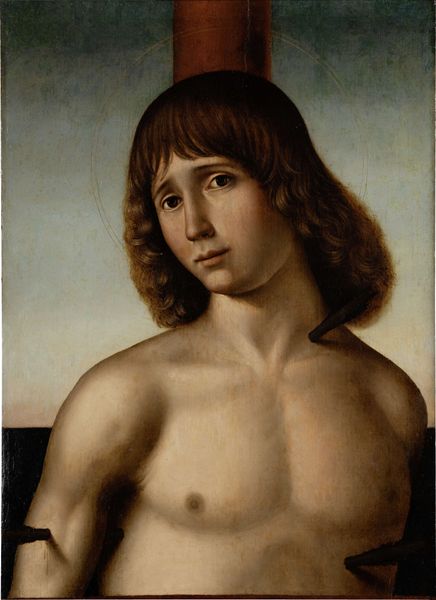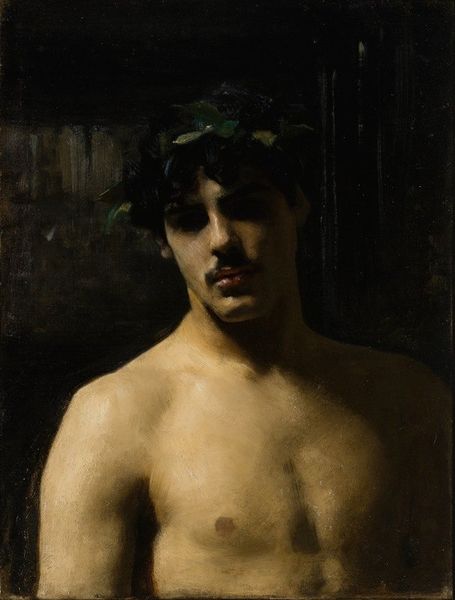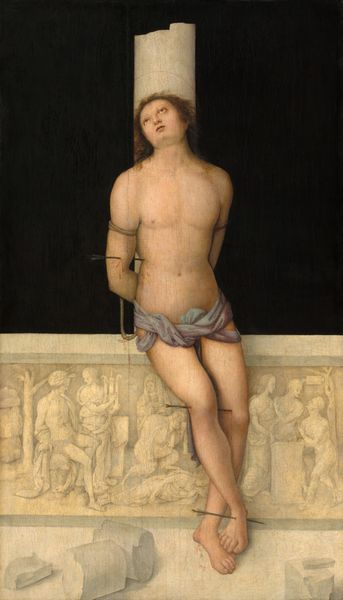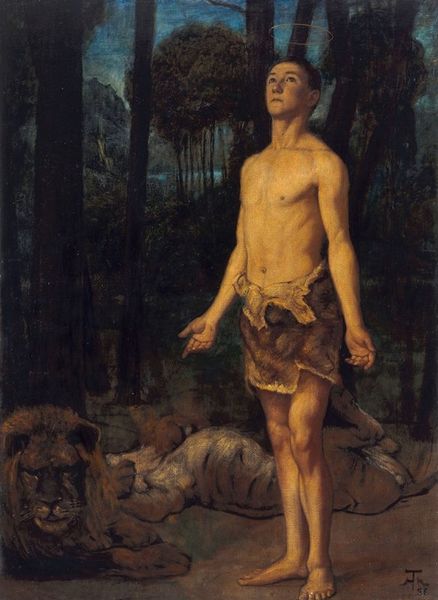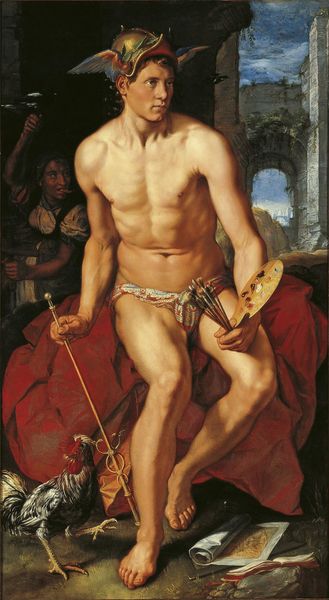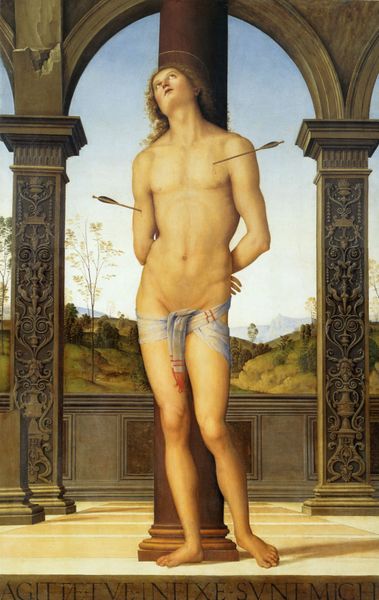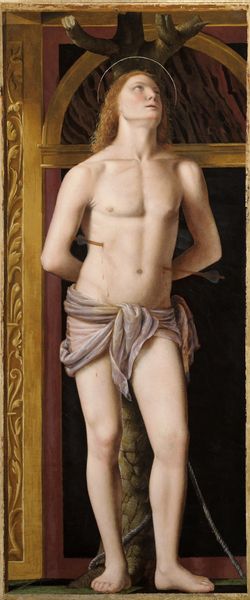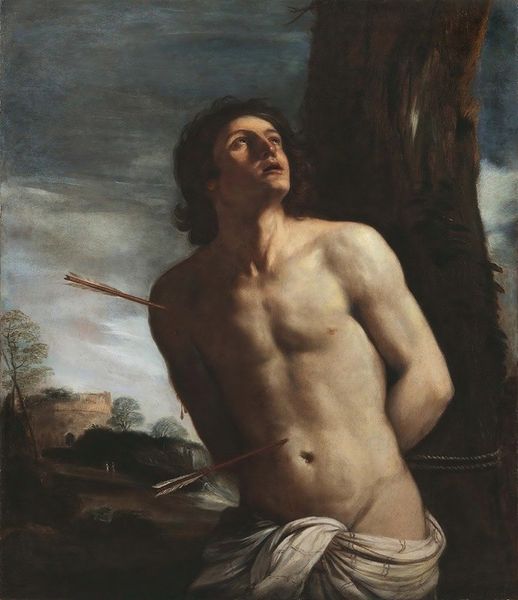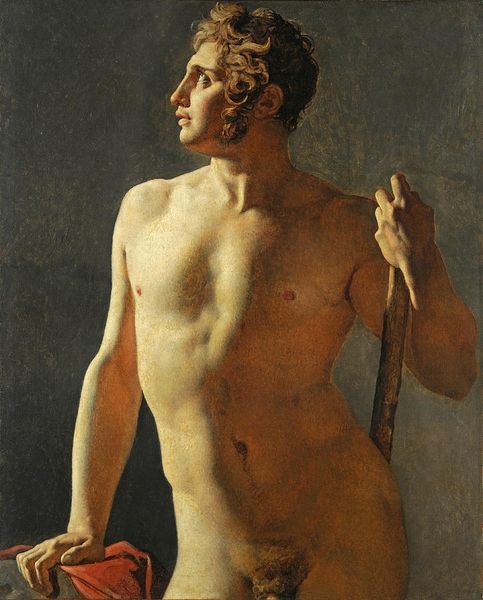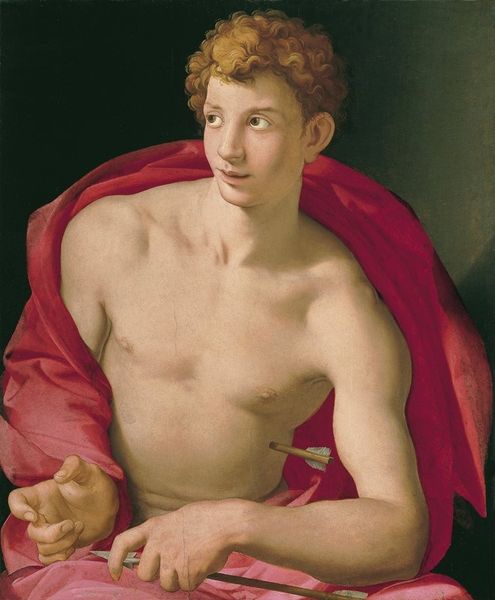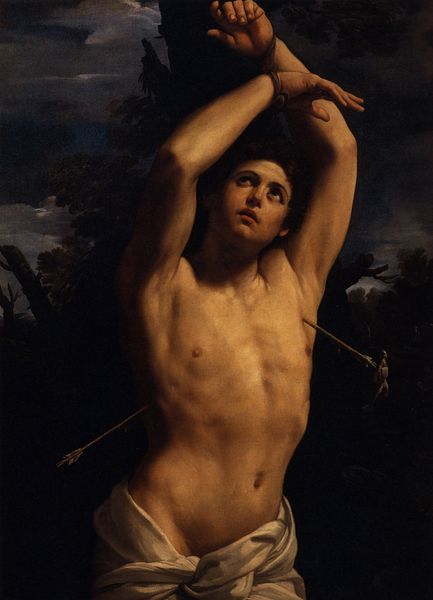
Dimensions: 91 x 69.8 cm
Copyright: Public Domain
Curator: Ottilie W. Roederstein's “The Victor,” painted in 1898 and held at the Städel Museum, offers a striking depiction of masculinity at the turn of the century. Editor: There's an arresting stillness about this figure, almost melancholic. The cool, muted tones give it a somber mood, a kind of heroic fatigue. What I find immediately compelling is the prominent scythe he grips. The tool marks him with toil and harvest; not necessarily dominance, even if he's called the victor. Curator: The title pushes us towards interpretations around triumph, power, and the historical archetype of the heroic male figure. Yet, the androgynous, almost vulnerable, portrayal complicates this narrative. What identities are shaping the narrative here? Is the figure self-aware, burdened by his role as the 'Victor'? Editor: Let’s talk about how it was made: you’ve got these thin, washy layers of oil paint building up to create flesh and shadow. The handling of materials lends to this sense of a constructed, almost artificial heroism. It's as if she’s deliberately avoiding the macho bravado that’s usually on display. Curator: I agree. By placing the laurel wreath on this almost androgynous figure and framing him within this slightly drab forest, Roederstein cleverly questions the established symbolism. She explores gender, sexuality, class and the traditional depictions of power that resonate far beyond just the victorious narrative implied in the name. The figure feels strangely disconnected, lost amidst societal expectations. Editor: Consider that scythe again. Its crafting – the shaping of the metal, the hafting of the wood – speaks to the labor embedded in both tool and victory. The land, and that subdued landscape backdrop, offers itself to interpretation about where such objects come from. There's such a direct, material connection to work in Roederstein’s vision. It forces the audience to consider those broader questions about labor, and value. Curator: Ultimately, Roederstein gives us a chance to think about not only the materials employed in the canvas but what ‘victory’ is made from. I find myself drawn to question how contemporary socio-political themes become inscribed into the historic, mythic themes prevalent at the time. It opens an intersectional dialogue regarding themes around class, labor and expectation and who truly profits. Editor: I walk away considering how materials and the means of depicting the ‘hero’ create an awareness of the toil often obscured by the term victory.
Comments
No comments
Be the first to comment and join the conversation on the ultimate creative platform.
